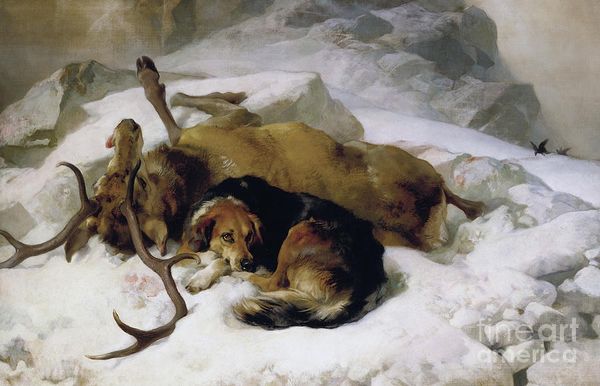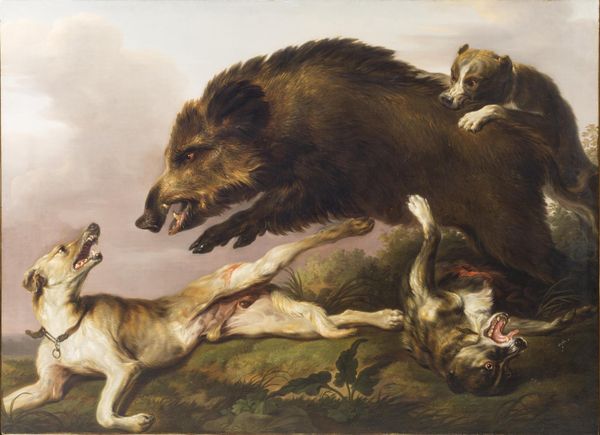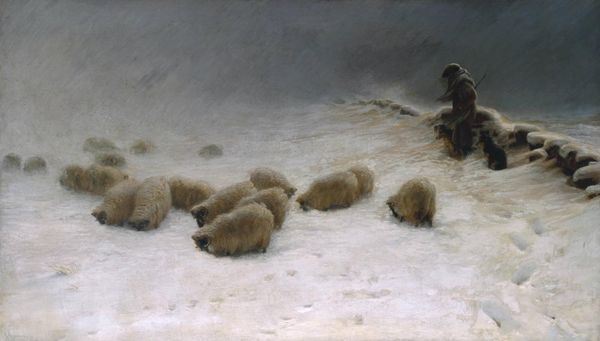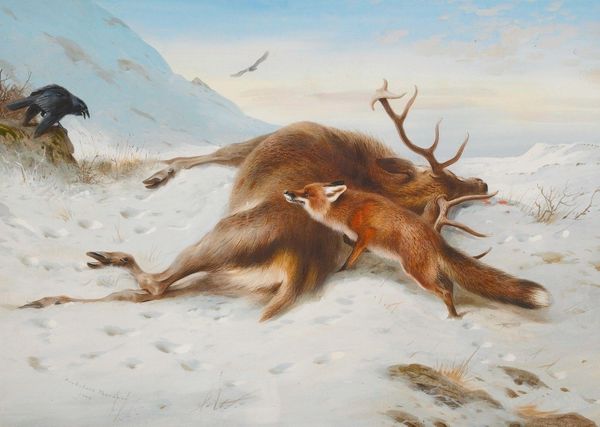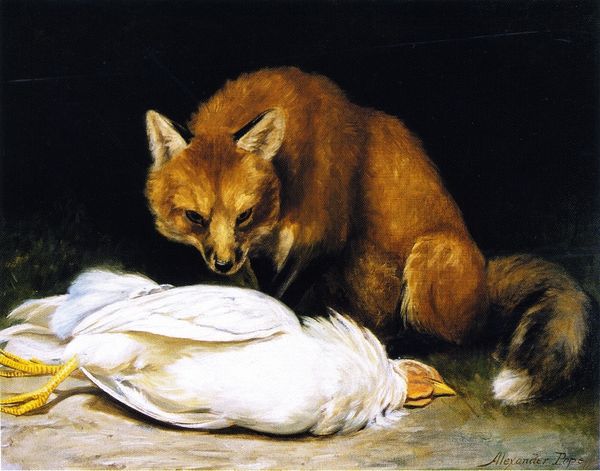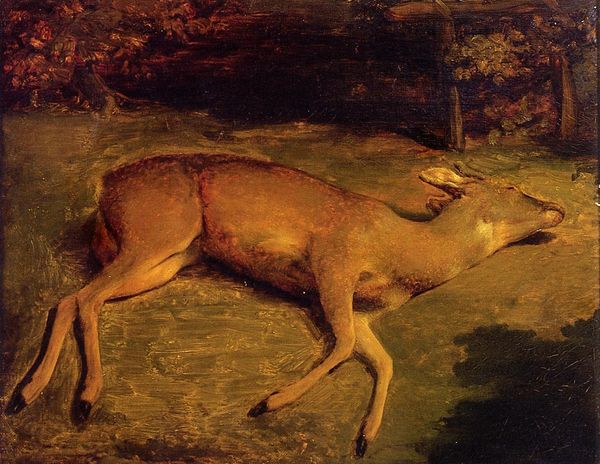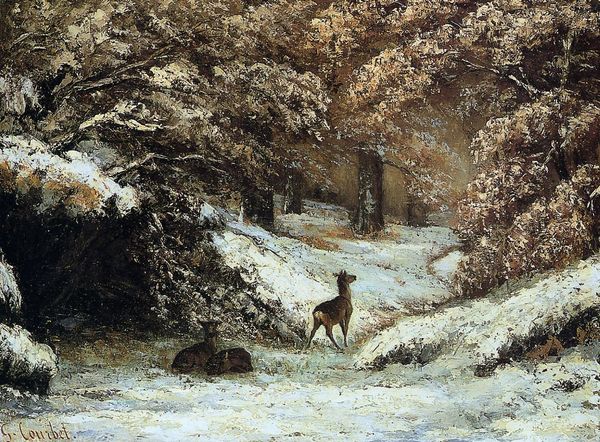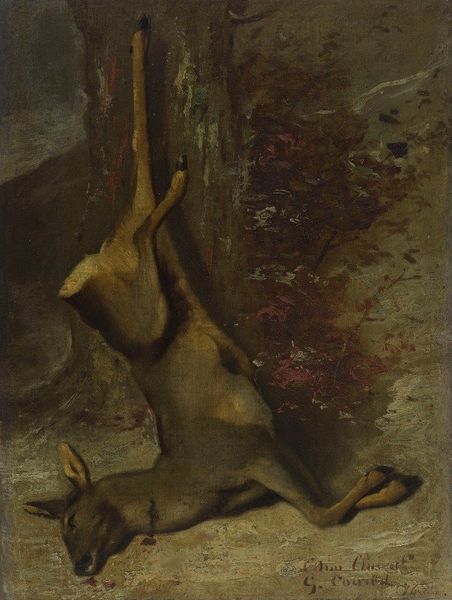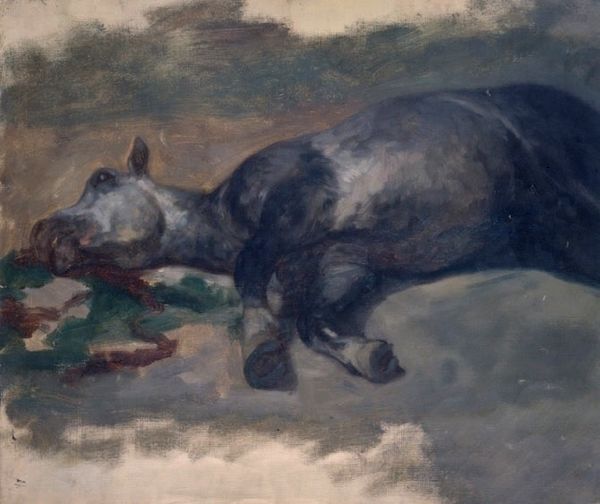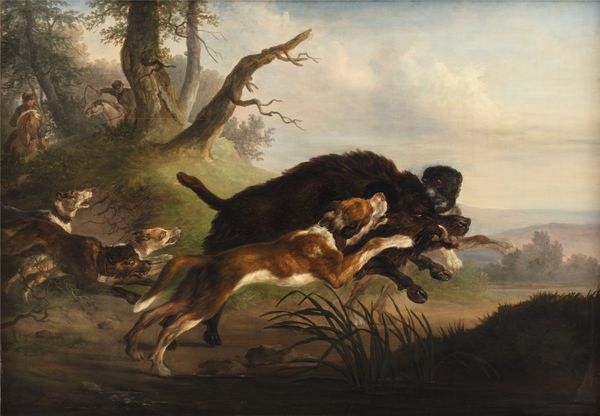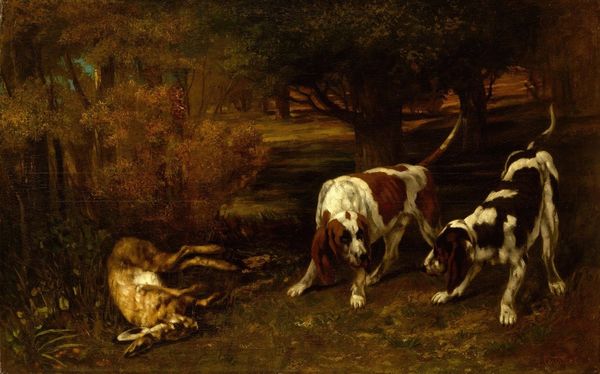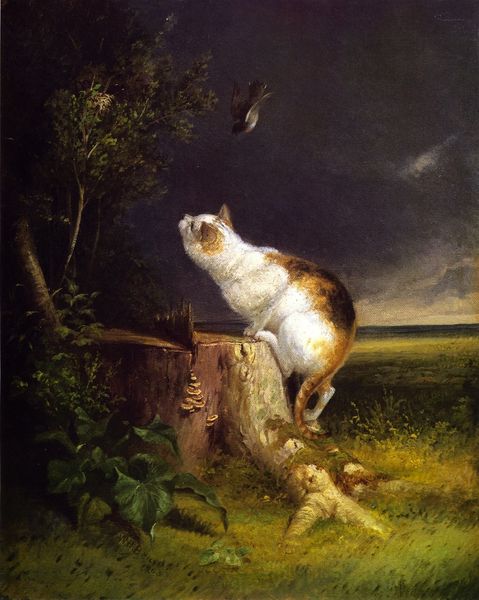
Dimensions: 86 x 128 cm
Copyright: Public domain
Editor: Here we have Gustave Courbet’s "The Fox in the Snow," an oil painting created around 1860. The stark landscape and the animal’s struggle definitely evoke a sense of the harsh realities of nature. What are your thoughts on it? Curator: This painting reflects a pivotal moment in art history when Realism was challenging idealized Romanticism. Courbet's choice to depict the unvarnished truth of nature, the fox caught mid-prey in a desolate winter landscape, can be interpreted as a political statement. It shifts focus from the aestheticized landscapes favored by the elite to the stark realities faced by many. What message do you think this "truth" relays about 19th-century French society? Editor: I see what you mean. It's like he's making the invisible visible – the daily grind and struggle that high society would rather ignore. The museum setting almost puts this on trial. How did viewers react to seeing something so raw in these institutions? Curator: The Salon audiences were often scandalized. Art was expected to uplift, not to confront viewers with unsettling realities. Courbet challenged those expectations, and by doing so, challenged the very power structures that upheld them. Did he intend to inspire socio-political activism or only expose harsh reality through paint? Editor: It sounds like this painting stirred things up quite a bit, forcing people to really look at the world around them, and how the social role of art should function! Thanks. Curator: Precisely! It also allows us to reflect on how institutions, like the Dallas Museum of Art, then frame historical paintings, such as "The Fox in the Snow." Food for thought.
Comments
No comments
Be the first to comment and join the conversation on the ultimate creative platform.

